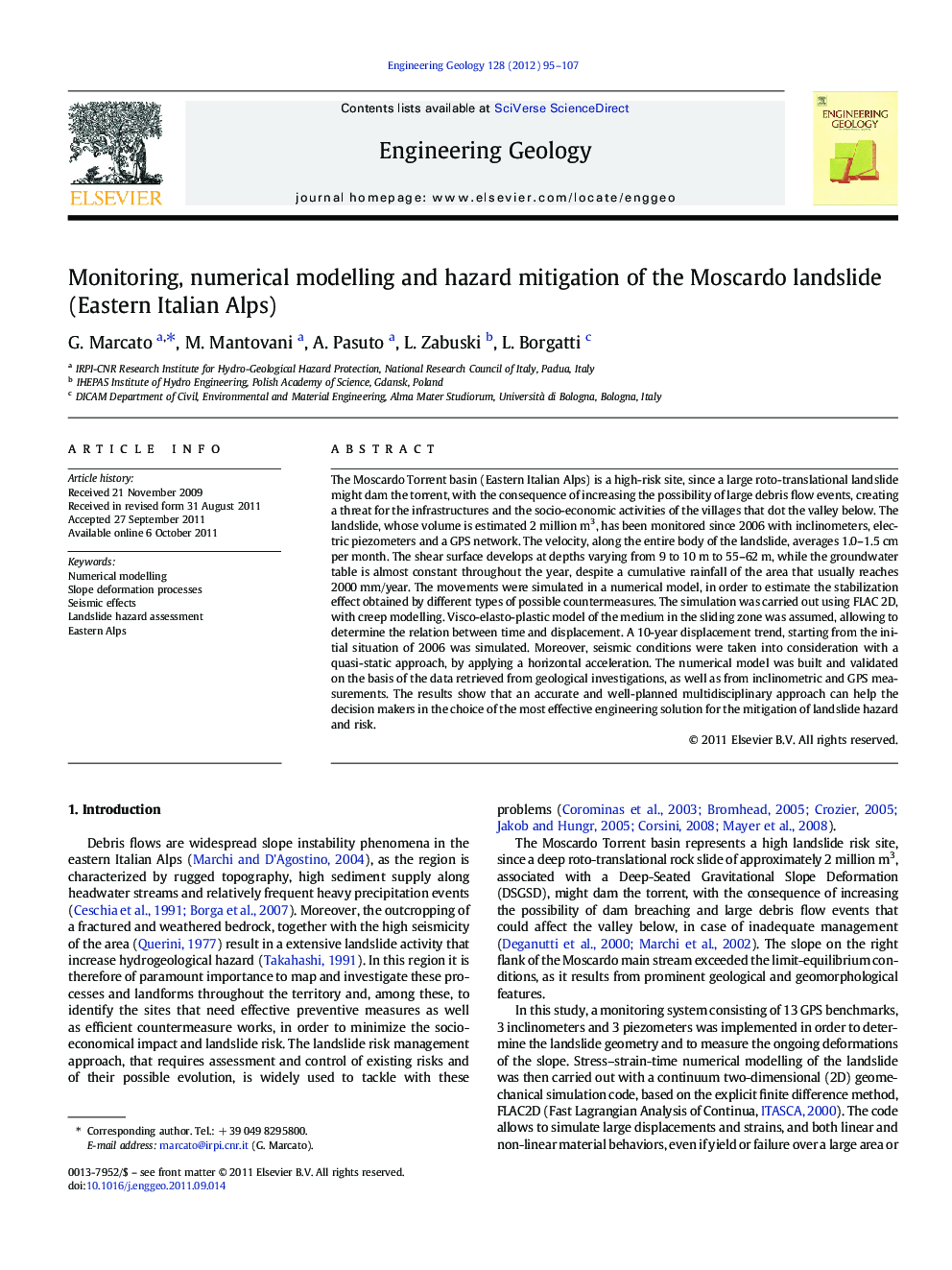| Article ID | Journal | Published Year | Pages | File Type |
|---|---|---|---|---|
| 4743978 | Engineering Geology | 2012 | 13 Pages |
The Moscardo Torrent basin (Eastern Italian Alps) is a high-risk site, since a large roto-translational landslide might dam the torrent, with the consequence of increasing the possibility of large debris flow events, creating a threat for the infrastructures and the socio-economic activities of the villages that dot the valley below. The landslide, whose volume is estimated 2 million m3, has been monitored since 2006 with inclinometers, electric piezometers and a GPS network. The velocity, along the entire body of the landslide, averages 1.0–1.5 cm per month. The shear surface develops at depths varying from 9 to 10 m to 55–62 m, while the groundwater table is almost constant throughout the year, despite a cumulative rainfall of the area that usually reaches 2000 mm/year. The movements were simulated in a numerical model, in order to estimate the stabilization effect obtained by different types of possible countermeasures. The simulation was carried out using FLAC 2D, with creep modelling. Visco-elasto-plastic model of the medium in the sliding zone was assumed, allowing to determine the relation between time and displacement. A 10-year displacement trend, starting from the initial situation of 2006 was simulated. Moreover, seismic conditions were taken into consideration with a quasi-static approach, by applying a horizontal acceleration. The numerical model was built and validated on the basis of the data retrieved from geological investigations, as well as from inclinometric and GPS measurements. The results show that an accurate and well-planned multidisciplinary approach can help the decision makers in the choice of the most effective engineering solution for the mitigation of landslide hazard and risk.
